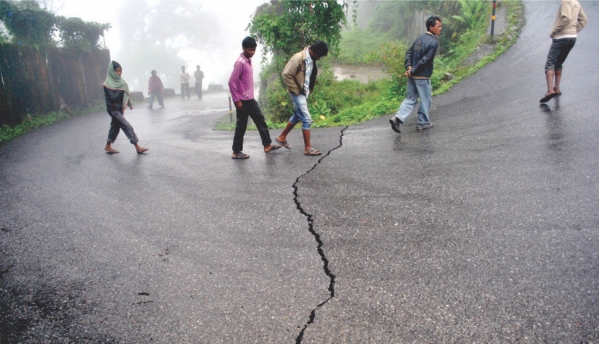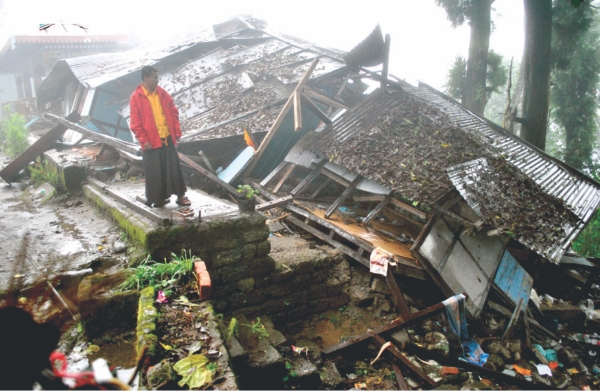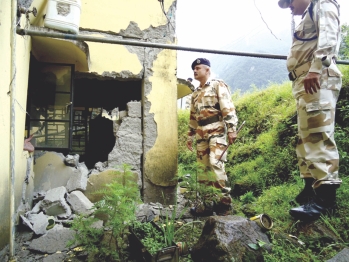| Home - Back Issues - The Team - Contact Us |
 |
| Volume 10 |Issue 36 | September 23, 2011 | |
|
|
Neighbours Seismic Retrofitting ‘a must’ to Save Lives Sunday's earthquake was the strongest to hit the country since 1934. However, the damage and casualties the country witnessed were exceptionally low. A tremor measuring 6.8 on the Richter scale would have otherwise left a trail of destruction in the city that is ranked among the most vulnerable to earthquakes. One of the reasons for the low impact in Kathmandu was the distance from the epicentre. However, if a quake of similar magnitude were to strike with the epicentre nearer to the capital, the consequences might be far different.
Structural damage will account for the high number of casualties in the city, according to Amrit Man Tuladhar, a senior divisional engineer formerly associated with the Department of Urban Planning. “The way we construct buildings has to change if we are to stay safe. We must not only rely on advertisements of steel rods and cements. Improvement of the existing buildings by applying the retrofitting strategy and complying with the National Building Code (NBC) will minimise the loss of lives,” he said. According to a JICA report of 2002, if a magnitude 8 earthquake strikes, 21 per cent of the buildings could be heavily damaged and kill 1.3 per cent of the total population, while also leaving 3.8 per cent of the population seriously injured.
According to Amod Mani Dixit, the executive director of Nepal Society for Earthquake Technology (NSET), if a quake like the one in 1934 were to strike the Capital, around 60 percent of the buildings would suffer heavy damage. A majority of the buildings that will be destroyed will be the old un-reinforced masonary ones that lack engineering to resist the earthquakes.
More than 40,000 deaths and 95,000 injuries are expected in the Valley if a major quake is to hit, he added. Sagar Krishna Joshi, the national programme manager of Earthquake Risk Reduction and Recovery and Preparedness Programme for Nepal, said the retrofitting strategy refers to any option of increasing the strength, stiffness and ductility of parts or the whole building. It is an advanced process that requires a higher level of expertise than that required to design or construct a new building. "It is of utmost importance to identify those buildings that are at high risk and carry out reconstruction or seismic retrofitting," he said. According to him, the concept of retrofitting masonry starts from enhancing integrity to the structure by providing connections between its resisting elements in such way that the inertia generated by the vibration of the building can be transmitted to all the parts of the building that have the ability to resist. Typical important aspects are connections—between components of floors and the roof, between the roof and the floors and the walls, between intersecting walls, and between the walls and the foundation. – The Editorial Desk, The Kathmandu Post. Copyright
(R) thedailystar.net 2011 |


